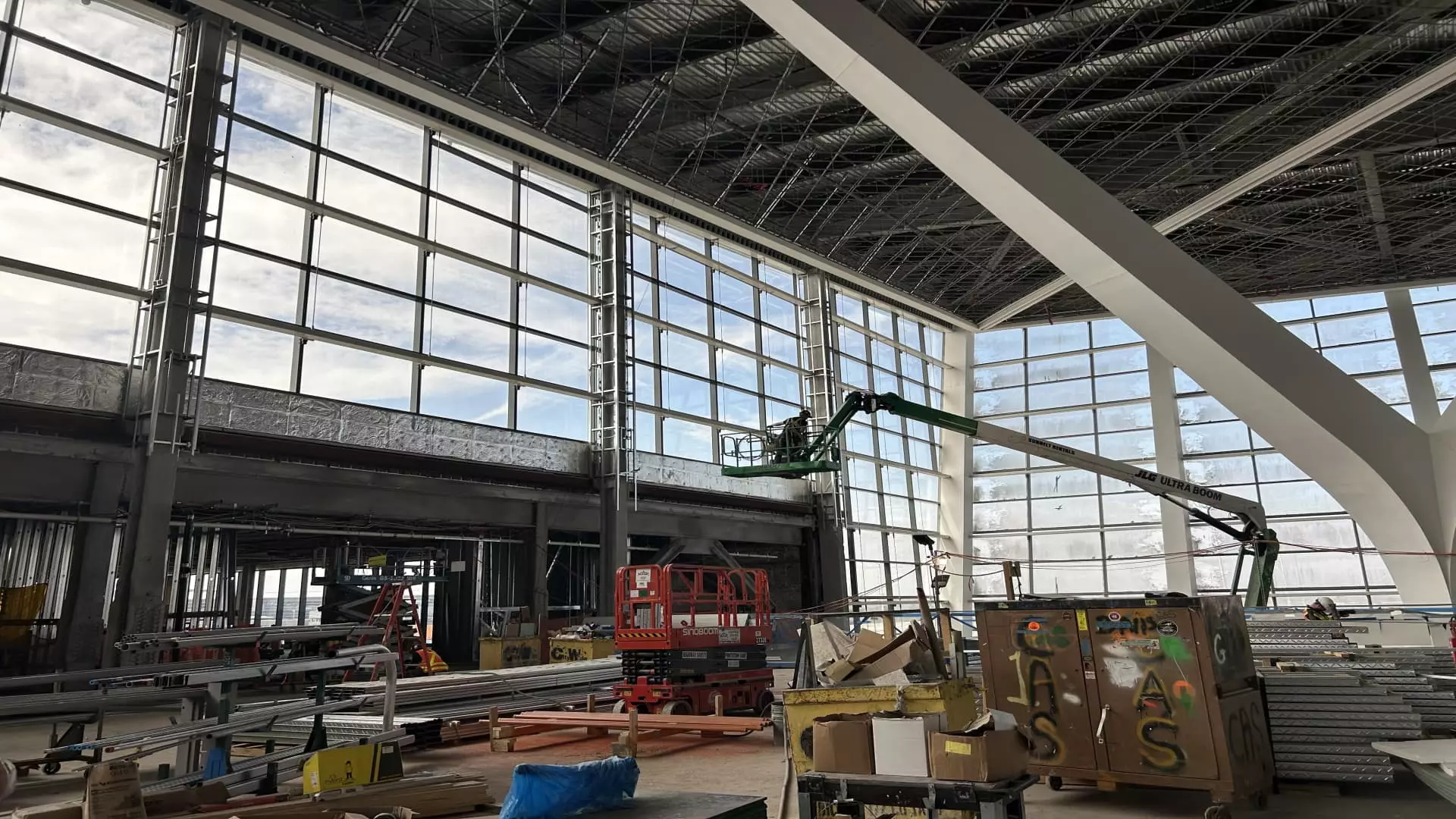The ongoing transformation of JFK International Airport’s Terminal 1 exemplifies America’s desire to maintain global dominance through infrastructure. At a staggering investment of $9.5 billion, the new terminal isn’t merely a transportation hub; it’s a statement of national prestige. Such monumental spending, contextualized within the broader $19 billion overhaul of JFK, underscores a readiness to prioritize image over prudence. For center-right advocates, this project reflects a strategic calculus—an assertion that America’s gateway airports must be as competitive and modern as the cities they serve. Yet, this focus on grandeur and scale prompts questions about the efficiency of such dedicated luxuries, especially when smaller, more cost-effective improvements could suffice. While prestige fuels national confidence, it can also mask an underlying tendency toward vanity construction that prioritizes appearance over practicality.
Overestimating the Power of Design to Transform Experience
The terminal’s butterfly-inspired architecture, designed to flood the space with natural light and eliminate basement customs lines, seems to embody aesthetic ambition. Architecturally, this is impressive. But does beauty equate to better service? From a center-right perspective that values pragmatic governance, sleek design must serve passengers and airlines efficiently, not merely create Instagrammable spaces. Relying heavily on visual appeal risks neglecting operational realities—will these expansive, luxuriously lit spaces handle the inevitable crowds during peak hours? Moreover, introducing a sense of openness and accessibility at a scale that dwarfs existing infrastructure could backfire if it doesn’t deliver improved throughput and reduced congestion. The focus on appearance must be balanced with functionality to ensure that this airport serves travelers, not just impresses them.
Strategic Focus on International Traffic: A Short-Sighted Priority?
By dedicating the entire new terminal exclusively to international travelers, the project aligns with the aspiration to position JFK as a premier global gateway. However, from a pragmatic center-right lens, this narrow focus might be shortsighted. While the emphasis on international carriers such as Turkish Airlines, Air New Zealand, and Etihad is commendable, it risks alienating domestic travelers and airlines that rely on more flexible or diverse services. Developing a terminal that caters solely to foreigners could artificially inflate the airport’s international prestige without addressing broader capacity or efficiency issues. Additionally, the shifting landscape of air travel—frequent fluctuations in international demand, geopolitical tensions, and fluctuating airline alliances—raises questions about whether this strategy is sustainable or just a vanity project meant to burnish JFK’s image at the expense of operational versatility.
The Financial Reckoning and Opportunity Cost
Allocating nearly $10 billion to a single terminal comes with significant opportunity costs. Realistically, many smaller U.S. airports grapple with aging infrastructure that impairs functionality or safety. Critics argue that this astronomical expenditure could have better served regional economies or improved existing facilities that require less capital and deliver more immediate benefits. Furthermore, the project’s dependence on taxpayer and state funding exposes it to political whims. While improving a major hub is vital for national competitiveness, there’s an underlying concern that this project’s costs may balloon or that future overruns could divert funds from other critical transportation initiatives. The grand vision of a nearly 600,000 square-foot retail and dining complex, including exclusive duty-free shopping, seems aligned more with luxury branding than passenger necessity—a sign that economic priorities are sometimes sacrificed for branding and tourism ambitions.
Legacy and Real Impact: A Question of Practical Value
Ultimately, the success of JFK’s Terminal 1 hinges on whether it enhances passenger experience and city connectivity or merely serves as a monument to modernity. As it stands, centers of political and economic power often equate airport prestige with national leadership, but the true legacy should be rooted in functionality and economic benefits—things that can be measured in passenger throughput, operational resilience, and regional economic activity. The real test will come when the terminal opens in 2026 amidst global economic shifts and changing travel patterns. Will this be a symbol of forward-looking pragmatism or an expensive vanity project? Only time will tell, but given the scale and ambition, it’s reasonable to remain skeptical of whether this colossal undertaking truly justifies its costs or merely signifies a hubris-filled quest for international bragging rights.

